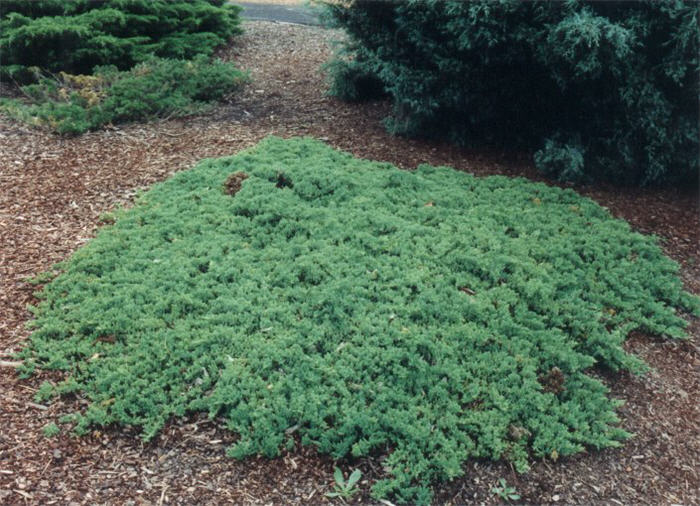| Botanical Name: Juniperus procumbens | |
| Common Name: Japanese Juniper |

-
Anatomy
-
Culture
-
Design
Plant Type
Conifer, Shrub, Ground cover
Height Range
1-3'
Flower Color
n/a
Flower Season
n/a
Leaf Color
Blue Green
Bark Color
Brown, Grey
Fruit Color
Purple
Fruit Season
Fall
Sun
Full, Half
Water
Very Low, Low
Growth Rate
Moderate, Slow
Soil Type
Sandy, Clay, Loam, Rocky, Unparticular
Soil Condition
Average, Poor, Well-drained, Dry
Soil pH
Neutral, Basic
Adverse Factors
n/a
Design Styles
Formal, Japanese, Mediterranean, Ranch, Seascape, Spanish
Accenting Features
n/a
Seasonal Interest
Winter, Spring, Summer, Fall
Location Uses
Entry, Shrub Border, Foundation, Parking Strip, Patio, Park, Parking Lot, Walls / Fences, With Rocks
Special Uses
Cascade, Erosion Control, Topiary, Mass Planting, Small Spaces
Attracts Wildlife
n/a
Information by: Stephanie Duer
Photographer: Gordon Courtright
Photographer: Gordon Courtright
-
Description
-
Notes
Another low-growing juniper species, these tend to form ground-hugging mats, which makes them nice to use with walls or around large rocks. Typically a little more stiff than J. horizontalis. Generally less than 2 feet high, though sometimes up to 3 feet; spread ranges from 8 to 15 feet, though they are slow growing. It has small, evergreen, blue-green to gray green scales, depending on the cultivar.
It prefers full sun with occasional watering once it's established. Though it seems indifferent to soil type, good drainage is a must. Its foliage and form are best when left un-sheared. Though junipers do well in low water conditions, they need regular and adequate water to become established. Avoid shearing or shaping, as it makes the shrub woody.